Story – Christopher Hector / Pix – Roslyn Neave
It was back in 2005 and the Rolkur debate was in full swing with heated accusations flowing from one side of the Dutch / German border, and back again. Klaus Balkenhol is a man of few words, but then again, they say that actions speak louder than words and we were lucky to witness one of the most telling contributions to the debate about the right – and wrong – way to work a horse when Klaus Balkenhol gave a training demonstration for a group of Italian Hanoverian breeders. He brought out the exciting young stallion, His Highness, with his stable rider, Stefan Wolff, in the saddle, and proceeded to give a demonstration of just how beautiful the correct way of working can be.
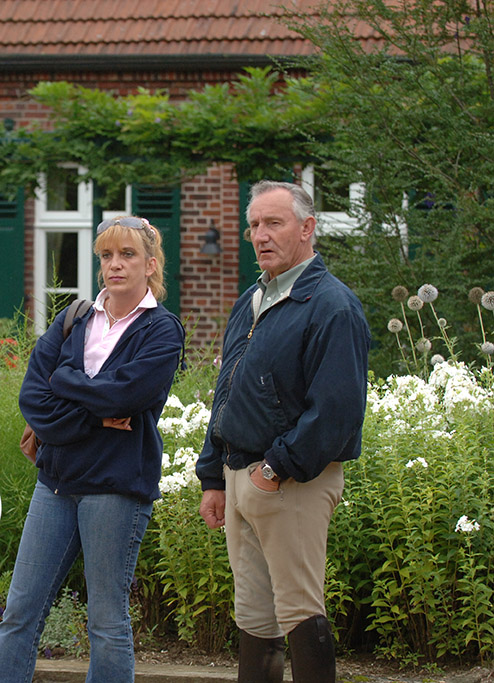
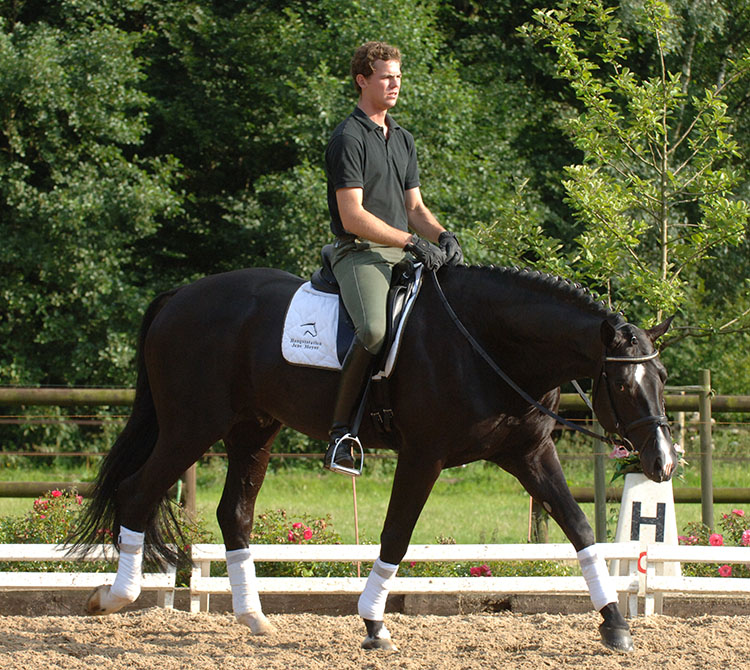
The debate over rolkur seems to have been won, and the technique largely banished, but still the horse world needs reminding over and over again, how to work a horse correctly… especially as the tense and spectacular way of showing Young Horses remains a problem, as we will undoubtedly see at the next World Young Dressage Horse Championships in Holland.
THE TRAINING SESSION
At every point the horse was invited to stretch and lengthen, and at no point was Klaus prepared to sacrifice this gentle, gymnastic work by jazzing up the young horse to put on a show for the crowd. When you see work like that, you can’t understand why riders put themselves, and their horses, under stress by departing from this time proven training scale. Indeed that was my first question to Mr Balkenhol as we chatted after the training session.
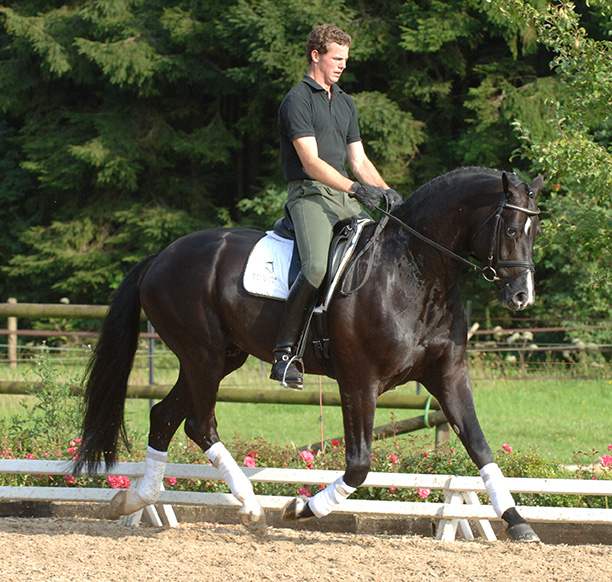
When you see a horse being worked like Highness was today, it looks so simple – nice for the horse, nice to the rider, no stress anywhere – why don’t all the trainers work like this? Why when it is so nice to do it correctly, do we see so much training that produces tense, irregular horses and in a way that looks very uncomfortable for both the rider and the horse?
“Those trainers don’t know any better. Riders think that the classic way takes more time, they look to the fast and popular way so they can earn money. The rules of classical training were developed in the Cavalry Schools, and the riders today have not grown up in that environment and so they don’t follow the right system.”
more on correct training follows
But you can go to the official handbook of the German FN, and see – this is the correct way to train…
“Out of books you can’t get the experience to train a horse, this comes from feeling.”
But is part of the problem judging? You were saying that you didn’t want His Highness to go like Florencio – but Florencio has won two World Titles, so the judges must like how he goes?
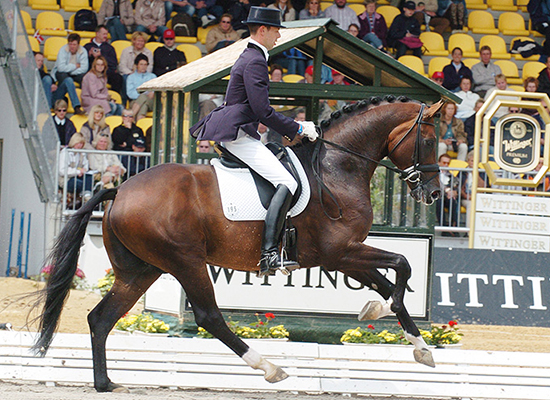 “But look at Florencio – the mouth is open, and it is not a correct way of going.”
“But look at Florencio – the mouth is open, and it is not a correct way of going.”
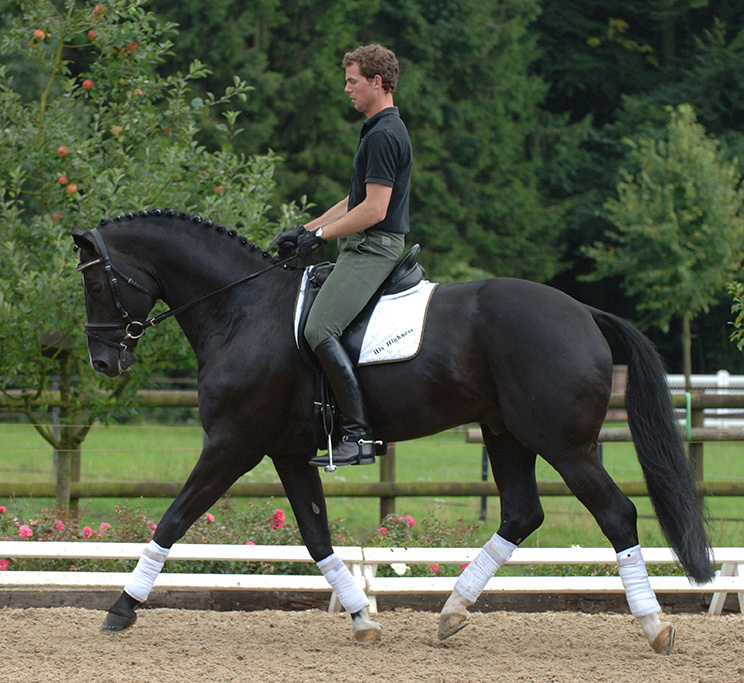
So why can’t the judges see what is correct and what is false?
“That is a big problem, the judges don’t judge what they see. If the horse is very up in front and not relaxed in the back and not swinging, and the hind leg is a little slower than the front one, the rhythm of the walk is broken, or the back is so tight that the walk is always short, they should mark down these things, but the big problem is that they do not. When you see horses working like this, then later when they are six or seven years old, they end up in the veterinary clinic.”
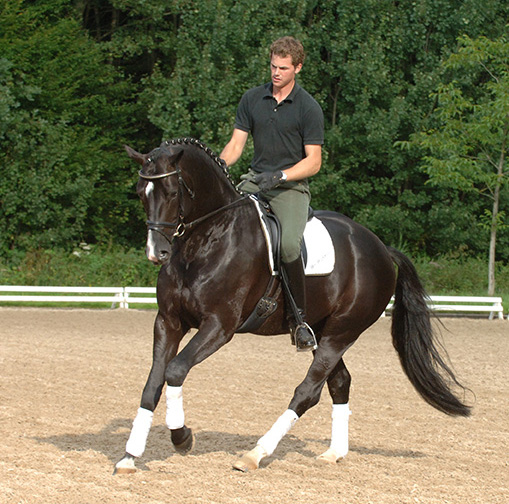
But in the article in St Georg magazine on this way of training, they refer to the top riders in the world – Martin Schaudt, Anky van Grunsven, Edward Gal – they are very successful with their techniques?
“You think that is nice when you see these riders train? With all those horses, the walk is gone. The problem is that the judges don’t see how the horses are worked at home or in the warm up. They see the horses only in the test.”
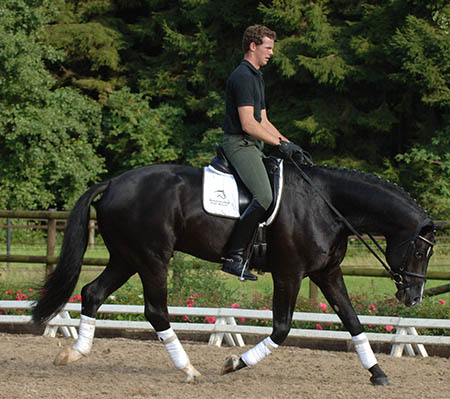
But if you look at Salinero at the Olympic Games in Athens, the horse did not stop correctly for the halt, he did not go into the corners in the Grand Prix, he looked very tense – but the judges said ‘this is the best test’. Why can’t the judges see what the spectators can see?
“That is the big problem. I really hate the method that they are trying to make into the new style – it is the opposite of what it should be. These new methods have been developing over the past ten years, and now they are even working with some vets to show that this ‘new way’ is a good way to work the horse.”
more follows
Looking for an exciting new dressage stallion for the 2024 season in Australia?
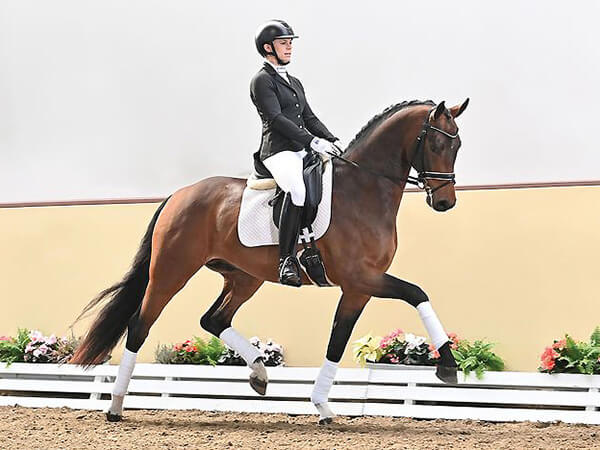
Consider Image Maker, or one of the exciting new stallions available from IHB – and go to www.ihb.com.au for many more great stallions
“I think the problem is starting with the training of the young horses – they are all trying to get a spectacular result – not that they are thinking about the health of the young horse. With the young stallions, they want them to look much older than they really are – and that is only working because people like that look for some reason, they don’t let the young horses be young horses.”
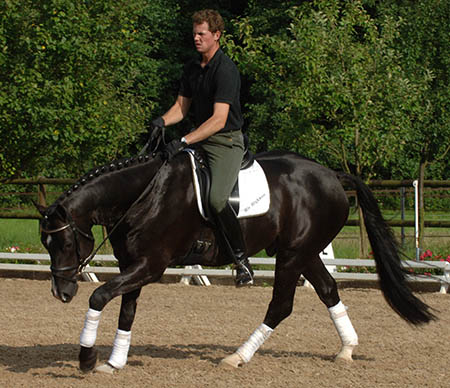
At the Bundeschampionate, they ask for ‘uberstreichen’ where the rider breaks the contact and the horse stays in the frame, but wouldn’t it be better for the rider to have to give the rein and the horse follow that rein and lengthen, that would be a better test of correct training?
“Yes, I agree with you. I think the people at Warendorf, at the FN, are thinking and trying to work out a way that is better for the young horses but there is the problem that the breeders say that people want to buy these very spectacular young horses, it’s hard to change when the breeder’s associations are very strong and they have an economic interest in the spectacular young horse way of going.”
“Some people who have been in the sport for many many years, retired judges, you can see them at big competitions and they are shaking their heads, they cannot understand what the judges are doing – why they are giving such good marks to horses that look so tense. I don’t know how it can be, when the winning horse at the European Championships –– is very often irregular in passage, but always scores an eight or a nine. How can that be? It’s not a real passage, it is more like a piaffe going forward, but it is not a real passage swinging through the body. Of course, you need judges if you want to ride dressage…”
“It is not always the judge who scores higher or lower who is wrong. . But this is not new, there have always been problems with judging and politics, right through history. Many times, people have warned ‘we are losing the straight way’, so it is always a problem.”
“I have heard that there are many letters coming into St Georg (German Equestrian Sport magazine), and many people agree with what has been written, even many people in The Netherlands. I also hear that many vets are speaking up, and that the national federations are ready to take action – but I fear it may be too late because the problem is not only at the big shows, even at the small shows they have these role models, and they think if they ride in this new way, they will be successful. I do a lot of clinics and seminars, and I receive a lot of emails from people who are worried that horses are being tortured at the shows. It is sad that it needed an article like that but now it is out in the open and things can get better. I know that our FN is worried that unless something is done the Animal Liberationists will try to stop our sport, and that would be terrible for everyone.”
Should there really be a mark for the warmup?
“That is what I think. At the World Championship for Young Horses I spoke to some judges and many told me that they don´t like to see some of the things that happen in the warmup. So perhaps people will support a mark for what happens in the warmup? It would be a substantial progress if the stewards supervising the warmup would take heart to warn even top riders serving as role models for all the other riders. Especially if there is a response from all over the world, then it will be better for the welfare of the horses we are responsible for.”
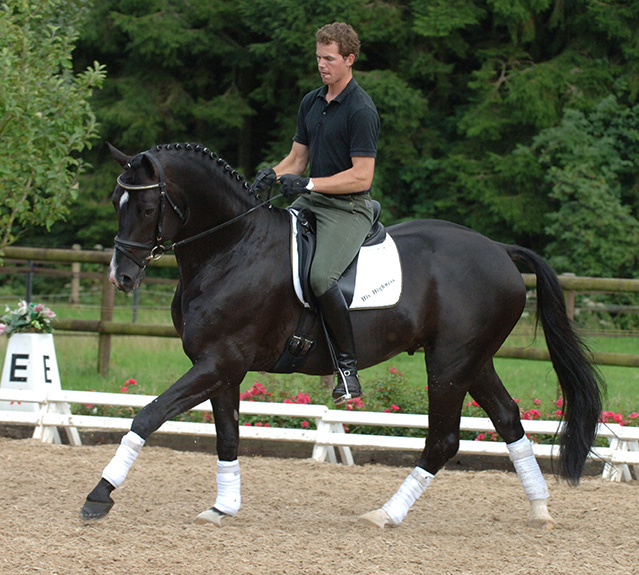
More pics follow of Stefan and His Highness competing and the Bundeschampionat in 2005, Highness died some time after as the result of an accident.
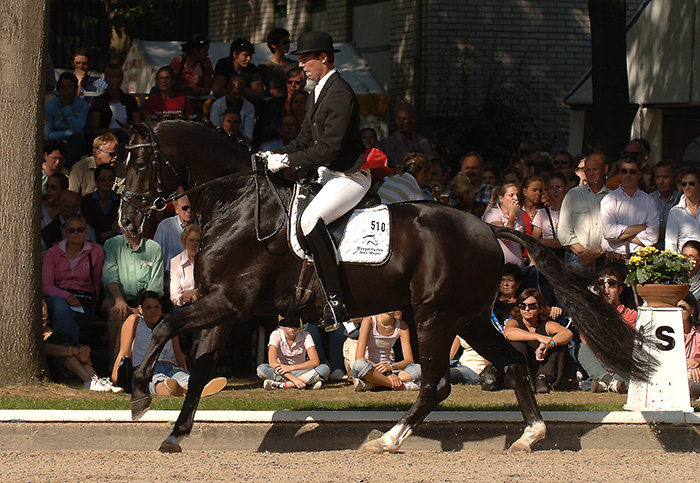
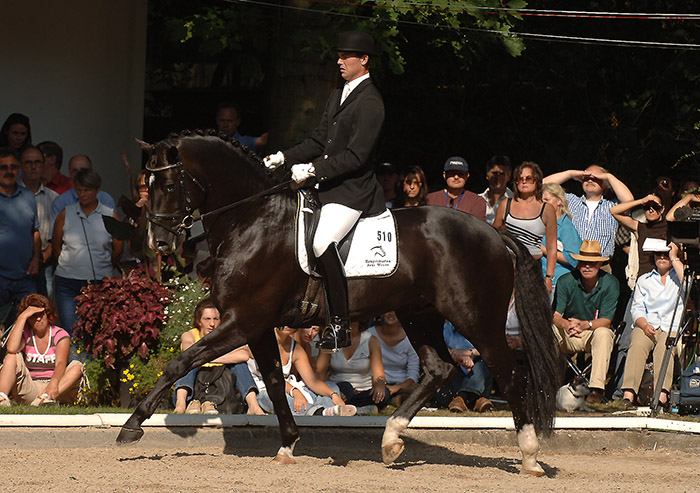
Looking for top European bloodlines in Australia? Go to www.ihb.com.au
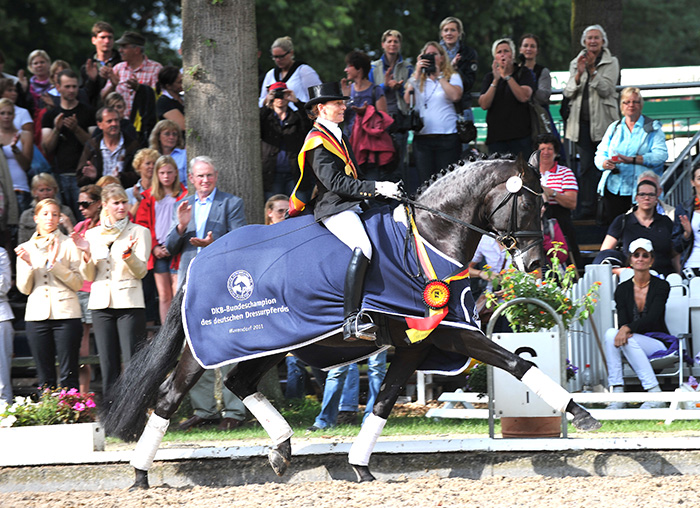
Like Bundes Champion, Furstenball


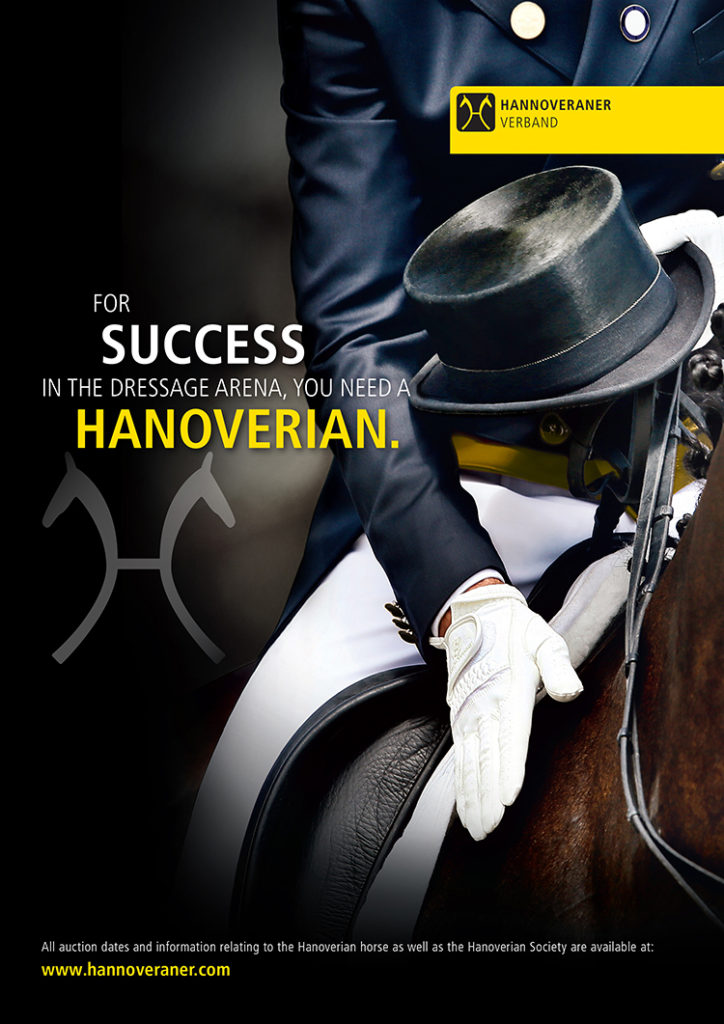
These photos are such a treat! Every single one so correct, the rider and horse appear so together and fluid in total equanimity. ❤️👍😍
I absolutely love and agree with this article! I was taught by a former member of the Viennese riding school and look at what is happening now and know he’s rolling in his grave! In my opinion it starts with the judges! If they can’t recognise what’s in front of them then they’re NOT GOOD ENOUGH! Competitors are always going to do what wins so the judges need far more education!!!
Excellent article . I attended a clinic of his some years ago as a spectator
, and learned so much .To be quite honest it is not very uplifting to see how so many wretched horses are ridden ,I dare n’t think how the training is at home ….
So nice to read THANKS!!
Absolutely it is the judges.
This is a wonderful article and Klaus is being honest and brave about calling out specific riders and pointing at judges for ignoring what is obviously harmful riding. I hadn’t heard of marking the warm-up before, what a great idea since that might transfer to working correctly at the home yard. Great article, thanks for posting.
Some of us have been saying this since day one.
Totilias was a prime example. Yet even renowned coaches gave me a hard time.
I suppose you have to be a celebrity to make an impression
Another excellent informative article.. Of course Klaus is totally correct!!
AMEN Klaus Balkenhol!!
Please join our Facebook anti rollkur group ‘FEI. Time to Act!’ If you agree with the content of this article!!
I’m surprised that this was only 2005. I came back home in 1977 & was happyto stay here as I did not like the way I was being asked to train my horses. I looked for a gentler way.
Ion
I only teach at a low level but believe that we should be encouraged to to learn correctly from a young age & from the beginning of our riding.
Krause Berkenhal is one of my Hero’s.